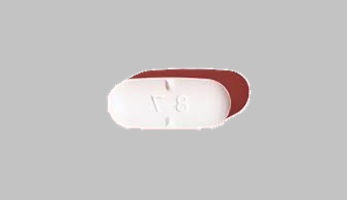Vitamin D Vs. Vitamin D3: What’s The Difference?
Vitamin D vs. Vitamin D3: What’s the Difference?
Vitamins D and D3 are not the same thing. While there are many differences between vitamin D and D3, the primary one is that vitamin D is a fat-soluble vitamin that controls the body’s levels of calcium and phosphorus, while vitamin D3 is the naturally occurring version of vitamin D that the body produces when exposed to sunshine.

More precisely, the group of particular fat-soluble vitamins comprising vitamin D2 and vitamin D3 is referred to as vitamin D.
Our body needs trace levels of vitamins as vital nutrients to function correctly.
One of the complicated vitamins that our body needs to thrive and develop is vitamin D.
Two types of vitamin D readily available are vitamin D2 and vitamin D3.
While there are many distinctions between vitamin D and D3, the primary one is that vitamin D is a fat-soluble vitamin that controls the body’s levels of calcium and phosphorus, while vitamin D3 is the naturally occurring version of vitamin D that the body produces when exposed to sunshine.
Additional distinctions between vitamin D and vitamin D3 are shown below.
What is vitamin D?
The phrase “vitamin D” refers to both vitamins D2 and D3, which are distinct versions of the vitamin.
Despite having somewhat different chemical structures and coming from distinct sources, the two forms provide the same health benefits.
Absorption of calcium and phosphorus, which are necessary for bone mineralization and density, is one of vitamin D’s main functions.
Vitamin D, in conjunction with calcium, is essential for bone health and the prevention of osteoporosis.
The following are additional functions of vitamin D:
- Assisting the immune system in its defense against germs and viruses
- Controlling the levels of glucose (blood sugar)
- Heart-related health
- Mood and cognitive function
- Reducing the likelihood of specific malignancies
Vitamin D2
Ergocalciferol, sometimes known as vitamin D2, is produced by yeasts and fungi.
Ergosterol is a type of yeast that is exposed to ultraviolet (UV) light to create vitamin D2.
Vitamin D2 is found in foods fortified with vitamin D, such as cereal, plant-based milk, and orange juice.
As a dietary supplement, vitamin D2 can also be found in liquid, sublingual (under the tongue), and capsule form.
Following ingestion, the small intestine absorbs vitamin D2 and then transports it to the liver, where it undergoes a transformation into 25-hydroxyvitamin D2.
The kidneys then transform it into calcitriol, the active form of vitamin D. As a result, your body can absorb the vitamin and put it to good use.
Vitamin D3
The body produces vitamin D3, or cholecalciferol, in response to sun exposure on the skin.
Additionally, it can be found in several foods derived from animals, including beef liver, egg yolks, and fatty fish like salmon and mackerel.
Vitamin D3 is frequently added to cow’s milk and other dairy products for fortification.
Liquid droplets, capsules, and sublingual tablets are the dietary supplement forms of vitamin D3.
Following sun exposure, the body processes vitamin D3 into 25-hydroxyvitamin D3, which is subsequently transported to the liver for further conversion.
Calcitriol, the active form of vitamin D your body utilizes to maintain health, is produced in the kidneys.
You cannot overindulge in vitamin D3, which is made in your skin, unlike vitamin D from food.
Your skin just generates less if your body already has plenty.
Still, a lot of individuals receive very little sunlight.
They either reside in a nation where there is little sunlight in the winter or work indoors.
If this describes you, be sure to consume lots of foods high in vitamin D daily.
Below is the difference between vitamin D and D3 as stated by the Mayo Clinic, National Health Service (NHS), and 25 (hydroxy)
Difference between vitamin D and D3; Mayo Clinic
Vitamin D refers to both vitamin D2 (found in plants) and vitamin D3 (obtained from the body and animal diets).
Both varieties, though, operate in the body in comparable ways.
Difference between vitamin d3 and vitamin D (25 hydroxy)
The liver breaks down vitamin D and D3 to produce 25-hydroxyvitamin D2 and 25-hydroxyvitamin D3, respectively.
Taking extra vitamin D3 has been shown in several studies to raise serum 25(OH)D levels, which in turn raises the amount of vitamin D that the body stores.
Difference between vitamin D and D3 NHS
Though vitamin D is fat-soluble and helps control our levels of calcium and phosphorus, vitamin D3 is a naturally occurring version that our bodies make when they are exposed to sunlight.
This is the main distinction between the two types of vitamins.
Which form of vitamin D is better?
Both vitamin D2 and vitamin D3, when taken regularly, have been shown in recent research to be equally efficient in raising your levels of vitamin D.
Consequently, to prevent deficiency, it is crucial to ensure that you are taking the proper dosage and that your levels are within the appropriate range of vitamin D.
The majority of specialists advise taking 600–800 IUs of vitamin D daily.
(The international unit, or IU, used to express the amount of vitamin D in meals and supplements is commonly used.)
How much vitamin D3 should I take daily?
For individuals up to the age of 70, the recommended dietary allowance (RDA) for vitamin D is 600 IU; after that, it increases to 800 IU.
For individuals who are nursing or pregnant, 600 IU is advised.
How to improve your vitamin D3 status
Many people who reside in northern latitudes—including those in the UK—are assumed to be vitamin D deficient due to the lack of sunlight in the fall and winter.
Because of this, the NHS advises that between October and March, everyone take a daily vitamin D pill containing 10 micrograms (mcg).
Consider taking vitamin D supplements all year if you have dark skin, stay inside a lot, or cover up much of your skin when you go outside.
Since oily fish is the finest dietary source of vitamin D, you can also enhance your vitamin D status by eating one or two servings of oily fish each week.
Wild mushrooms and foods fortified with vitamin D, such as cereals, are suitable substitutes if you avoid eating animal products.
What is vitamin D3 good for?
The body uses vitamin D3 to absorb calcium and phosphorus, two elements that are necessary for strong, healthy bones and teeth.
To avoid osteoporosis, osteopenia, and osteomalacia—diseases marked by the weakening or softening of the bones—vitamin D supplements are frequently utilized.
What’s the best way to get vitamin D?
The greatest methods to obtain vitamin D are through diet and sun exposure, as stated below:
Exposure to sunlight: When your skin comes into contact with the sun, your body transforms it into vitamin D.
You may help your body make enough vitamin D by exposing it to the sun for just 10 to 15 minutes each few days, without wearing sunscreen.
Food sources: Fatty fish, egg yolks, organ meats, and fortified foods such as cereal, milk, and orange juice are good sources of vitamin D.
Vegetarians and vegans may find it more difficult to meet their vitamin D needs through diet alone.
Food supplements: If you don’t receive enough sun exposure or have trouble absorbing vitamin D from food, vitamin D pills can help make sure you get enough of the vitamin to support your health.
Vitamin D or D3 for hair loss
Among the many body parts that vitamin D affects are skin and hair health.
Vitamin D is involved in the process of hair follicle formation.
The microscopic pores, called hair follicles, are where new hairs originate.
The addition of new follicles may help hair retain its thickness and delay the premature loss of existing hair.
Vitamin D3 is more effective at improving vitamin D status
It is recommended to choose vitamin D3 supplements over vitamin D2 supplements if you have the choice.
Vitamin D3 supplements are believed to be more effective than those containing vitamin D2.
You should only take vitamin D2 if you’re a vegan.
Vitamin D deficiency
Experimental and clinical research supports the use of vitamin D2 and D3 forms to increase vitamin D levels.
But it’s now proven that vitamin D3 raises blood levels more effectively and for a longer period than vitamin D2.
A study finds that, compared to vitamin D2, vitamin D3 is around 87% more potent at raising and sustaining vitamin D levels by two to three times.
The reason why vitamin D2 formulations on the market typically have higher dosages than vitamin D3 is why some doctors may prescribe vitamin D2 more frequently than vitamin D3.
Additionally, because it is less expensive to produce, vitamin D2 is more easily found in pharmacies and grocery stores.
Common vitamin D deficiencies include:
- Bone health and fractures
- Chronic Kidney Disease (CKD)
- Reduced immunity.
- Cardiovascular disease
- COVID-19
- All-cause mortality
Common side effects of vitamin D vs. D3
Neither vitamin D2 nor vitamin D3 therapy has any typical adverse effects.
Hypervitaminosis: D causes vitamin D-related side effects. You get this incredibly rare illness when you consume too much vitamin D.
Vitamin D toxicity can occasionally be observed in patients who get megadoses of the vitamin.
As a consequence, the blood becomes dangerously high in calcium, which can cause nausea, vomiting, constipation, and frequent urination.
Irreversible renal failure and soft tissue and organ calcification may result from untreated conditions.
The negative effects listed in the accompanying table are associated with hypervitaminosis D, not with regular vitamin D administration.
Your healthcare professional can give you more details about vitamin D toxicity, as this may not be an exhaustive list.

Conclusion on Vitamin D vs. Vitamin D3
An important micronutrient for immune system performance, bone health, and general health maintenance is vitamin D.
Vitamin D2 and vitamin D3 are the two main types of vitamin D.
The type of vitamin D that the body produces upon exposure to sunshine is called vitamin D3.
It seems to be more successful at increasing and sustaining blood levels of vitamin D than vitamin D2.
Sunlight exposure, dietary sources, and supplementation are all ways to get vitamin D.
The amount of vitamin D that is advised daily varies based on age and general health.
To find out which type of vitamin D is best for you, consult a healthcare expert.
FAQs about Vitamin D vs. Vitamin D3
Should I take vitamin D or D3 daily?
If you have not already acquired enough vitamin D, you can utilize vitamin D supplements (available as vitamin D2 or D3).
Research indicates that, particularly at larger dosages, vitamin D3 raises vitamin D levels more quickly than vitamin D2.
I advise taking vitamin D3 tablets because of this.
Which is better, vitamin D or vitamin D3?
Though D3 is marginally more active and hence marginally more effective than D2, both can assist in treating vitamin D deficiency.
This is why most doctors suggest D3.
Why do doctors prescribe vitamin D instead of D3?
There are two types of vitamin D supplements: vitamin D2 (D2) and vitamin D3 (D3).
Vitamin D insufficiency can be treated with either version; however, D3 appears to work better than D2.
Because vitamin D2 is more readily available in higher doses, people with low vitamin D levels are nevertheless prescribed it.
Is vitamin D totaling the same as vitamin D3?
There are various ways that your test findings could be reported.
You could receive a single vitamin D result or distinct results for vitamin D2 and vitamin D3.
In your body, these two forms of vitamin D function similarly. The total of these two forms is your vitamin D level.
Is it good to take vitamin D3 every day?
Adults should not take more than 100 micrograms per day, according to current standards.
On the other hand, vitamin D is a fatty acid.
Can you take vitamin D and vitamin D3 together?
In the end, vitamin D2 and D3 can be taken simultaneously since they are both transformed into the active form of vitamin D by enzymatic processes in the liver and kidneys.
To put it another way: yes, in a nutshell. Vitamin D and D3 are compatible and can be taken simultaneously.
Who should not take vitamin D3?
If you have experienced
- A vitamin D allergy, hypervitaminosis D (high vitamin D levels in the body),
- If you have hypercalcemia (high blood calcium) or any other condition that impairs your body’s ability to absorb nutrients from food, you shouldn’t use cholecalciferol.
What happens to your body when you start taking vitamin D3?
According to Schleiger, vitamin D3 mediates the synthesis and control of neurotransmitters like serotonin, which is essential for mood regulation.
Sufficient levels of vitamin D3 may enhance mood and mental health in general.
What is vitamin D3 good for?
A supplement called vitamin D3, sometimes referred to as cholecalciferol, aids in the body’s absorption of calcium.
Usually, it is used to treat patients with vitamin D deficiency or disorders associated with it, including osteomalacia or rickets.
Some people who may require additional vitamin D include older people.
How long should you take vitamin D3?
If your blood levels are abnormally low, you could require greater dosages, which you should take under a doctor’s supervision.
For six to eight weeks, begin giving individuals with vitamin D levels below 20 mg/mL 50,000 IUs of vitamin D3.
Which vitamin D is best?
Vitamin D3 supplements tended to elevate blood concentrations of the vitamin more and maintain those levels longer than D2 supplements, according to a meta-analysis of randomized controlled studies comparing their impact on blood levels.
According to some experts, vitamin D3 is best taken in its natural form.
What is the real name of vitamin D3?
Vitamin D3, or cholecalciferol, belongs to a group of drugs known as vitamin D analogs.
The body needs cholecalciferol to maintain healthy bones, muscles, neurons, and immune system function.
The supplement works by facilitating the body’s uptake and utilization of calcium from meals and other sources.
What is another name for vitamin D3 supplements?
Cholecalciferol (Vitamin D3)
Is taking vitamin D3 good for you?
Among its many health advantages, vitamin D3 (cholecalciferol) aids in the body’s absorption of calcium.
Fish, cow liver, eggs, cheese, and other foods naturally contain vitamin D3.
Additionally, after being exposed to ultraviolet (UV) light from the sun, it can be created in the skin.
When should I take vitamin D3—morning or night?
Vitamin D can be taken at any time of the day. No period is deemed to be “better” than any other.
The secret is to figure out a time that suits you and stick to it.
The greatest defense against developing a vitamin D deficit is consistency.
Is it better to take vitamin D3 every day or once a week?
Although taking adequate vitamin D once a week will help you stay balanced, daily doses of 1,000–2,000 IUs (or 25–50 mcg) have been shown to produce the best outcomes.
To achieve optimal absorption, take vitamin D regularly with a meal that includes healthy fats.
Can I take two vitamin D3 pills a day?
For most adults, the NIH recommends a daily consumption of 600 IU (15 mcg).
Overdoing the Tolerable Upper Intake Level (UL), set at 4,000 IU (100 mcg) per day, is generally not advised.


